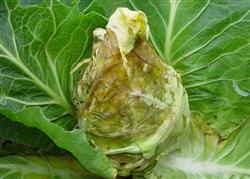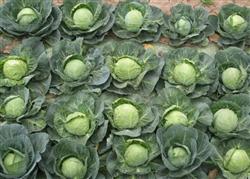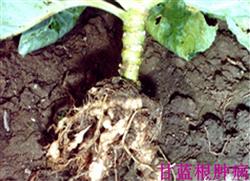How much information do you know about Brassica napus?

Rapeseed (Brassica napus L.) is a fertilizer-tolerant crop with high demand for N and K and sensitive to P and B. fertilization is one of the most flexible and important measures to regulate its nutritional physiological process and affect the yield and quality of rapeseed. Rational fertilization must be based on yield indicators to determine the level of fertilization, the specific amount of fertilizer and the proportion of various elements, to adapt to the content of soil nutrients, and to maintain the balance of soil nutrients. The results of optimized cultivation experiment showed that on the basis of applying sufficient organic fertilizer and micro-fertilizer, the target yield of rape reached 220-240kg per mu, and urea 35-37kg, 25-28kg and 10-11kg of urea, 25-28kg and 10-11kg of potassium sulfate were needed, urea 42-43kg, 27-30kg and 10-11kg of urea, 27-30kg and 10-11kg of potassium sulfate were applied per mu, and urea 45-47kg, 44-47kg and 11-12kg of potassium sulfate were applied per mu. In addition, there are great differences in the benefits of various fertilizers in different periods. Rape fertilization should be based on base fertilizer, the combination of base fertilizer and topdressing, and the technology of "re-application of base fertilizer, sufficient application of seedling fertilizer, suitable application of moss fertilizer and skillful application of micro-fertilizer". The method is as follows: using mature organic fertilizer 1500-2000kg per mu, combined with ploughing into the soil and mixing as base fertilizer; 50% of P, K fertilizer and 60% of the total amount of urea are evenly mixed and 60% of the total amount of urea is uniformly mixed with 60% of the total amount of urea in the plough layer of 5-10cm to be used as middle fertilizer; 30% of the total urea is applied with water in time at the five-leaf stage to promote effective flower bud differentiation. 10When 20% urea is applied at 10-20cm, appropriate, timely and appropriate application, it can improve the effectiveness of differentiated flower buds, strengthen moss, increase branches, and increase the number of effective pods. The amount of N fertilizer in the middle fertilizer depends on the quality of the soil fertilizer conservation and the level of fertilization. If the soil fertilizer conservation is good, the fertilizer level is high, it can be applied more, but it is better not to exceed 70% of the total N application, and vice versa. Brassica napus is sensitive to boron, and the content of water-soluble boron in soil is more than 0.5PPm. When it is below 0.4PPm, rapeseed shows obvious symptoms of boron deficiency, which leads to "flower but not fruit". In the seriously boron deficient soil, applying 0.5-1kg borax as base fertilizer per mu can meet the boron demand of rape during the whole growth period, and the effect of increasing yield is significant; in general boron deficient soil, spraying 0.2% borax or rape special micro-fertilizer water solution at seedling stage and budding stage can also play a good yield-increasing effect.
- Prev

Explain the reason of "immature bolting" of spring cabbage
Cabbage is a fertilizer-loving and fertilizer-resistant vegetable. Generally, about 35 days after planting, the plant reached the peak of nitrogen, phosphorus, calcium and other elements and absorption, while the absorption of potassium reached the peak at 50 days. Before reaching the peak value, the fertilizer uptake of plants increased linearly with the process of growth period. Cabbage at different growth stages.
- Next

Prevention and control of diseases, insect pests and weeds in cabbage vegetables at seedling stage
Cabbage root swelling disease mainly harms cruciferous vegetables. After the onset of the disease, the root is enlarged and tumor-like, so it is called root swelling disease. In general, the main root is lumpy after infection, and the fine root, branch root, lateral root and fibrous root are locally swollen after infection. The simple diagnosis of root swelling disease is similar to that of root knot nematode disease in the field. It can be dissected when it is different.
Related
- Where is it suitable to grow horseradish in China? it is expected to see the middle altitude horseradish in Alishan.
- How to prevent tomato virus disease reasonably? (Control methods included)
- Many people like to plant towel gourd on the balcony. What are the main points of this method and management?
- What crops can chili peppers be mixed with?
- Fertilization techniques and matters needing attention in Tomato
- What are the grafting techniques for peach seedlings in spring?
- Harm and control methods of root swelling disease of Chinese cabbage
- What are the pests of sweet potatoes? How to prevent and cure it?
- Symptoms, causes and Control methods of navel Rot in Tomato
- The cause of "Cucumber rotten bibcock" in Farmers' planting Cucumber and its Control Plan

